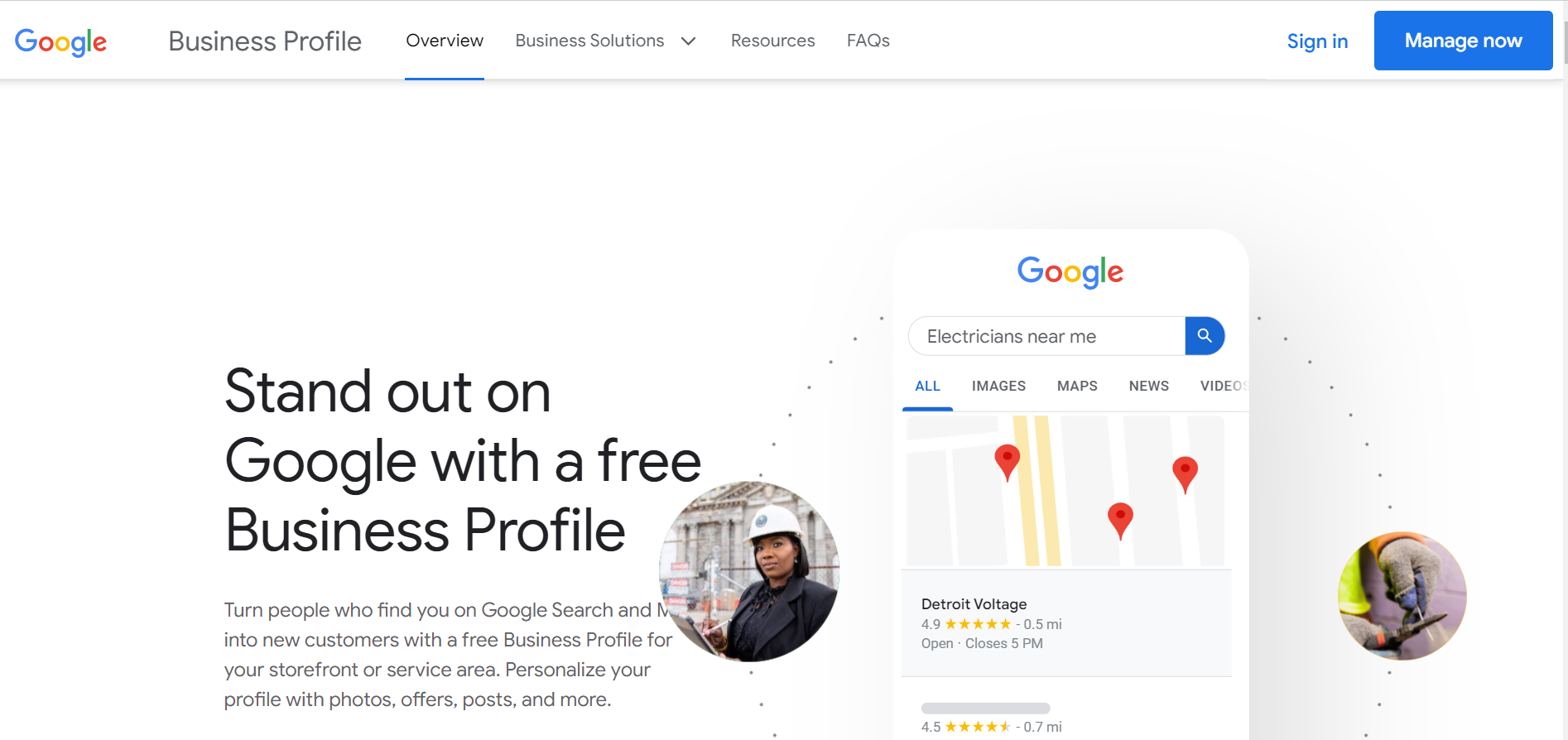6 Ways to Get Clients for Your Life Coaching Business Without Using Social Media
Hey there, I'm Natalia, the founder a web designer for holistic life coaches and female entrepreneurs , and a self-proclaimed content nerd. I know how it feels to be tired of finding clients through social media. It's easy to get lost in the crowd and hard to stand out.
As a course creator or creative, you might think that having an Instagram account is enough for your business marketing, but that's a huge mistake. It's important not to throw all your eggs in one basket and diversify your marketing efforts to get clients.
That's why I've put together this article to share six ways you can get clients without relying on social media.
6 ways to get clients for your life coaching business without using social media
1- Set up Google My Business (and you don’t need a website to do this)
If you're offer services in your local area or country, setting up a Google My Business listing is a must. It's a free tool that allows you to manage your online presence across Google, including search and maps. By
optimizing your listing
, you can appear in Google's local search results, which can help you attract new clients.
For example, imagine you're a wedding planner based in New York City. When someone searches for "wedding planner near me" on Google, your business could appear in the local search results, along with your reviews, contact information, and location.

2- Start a blog and rank for targeted keywords
Blogging is a great way to showcase your expertise and attract new clients. By creating high-quality content that targets specific keywords, you can rank higher in search results and drive more traffic to your website.
For instance, if you're a business coach for women entrepreneurs, you could write a blog post on "10 Tips for Women Entrepreneurs to Build a Successful Business". By using relevant keywords in your post, you can rank higher in search results and attract more potential clients.

3- Use email marketing to get in the inbox of your future clients
Email marketing is a powerful tool for service providers to nurture their leads and build relationships with their potential clients. By offering valuable content and personalized messages, you can keep your business top of mind and increase your chances of converting leads into clients.
For example, if you're a graphic designer, you could send out a monthly newsletter with design tips, trends, and inspiration. By offering value to your subscribers, you can build trust and credibility, which can lead to new client opportunities.
4- Collaborate with other creatives and offer products or services together.
I love this one because collaborating with other creatives is a great way to expand your network and reach new audiences. By offering complementary products or services together, you can create a unique and valuable experience for your clients.
For instance, if you're a copywriter, you could collaborate with a graphic designer to offer a package deal that includes copywriting and design services. By combining your skills, you can provide a more comprehensive service that meets your clients' needs.

5- Attend networking events physical and digital
Networking events are a great way to meet new people and build relationships with potential clients. By attending events that are relevant to your industry or niche, you can connect with like-minded individuals and learn more about your target market.
For example, if you're a social media manager, you could attend a local small business expo or a digital marketing conference. By networking with other attendees, you can learn more about their pain points and offer your services as a solution.
I’m part of several digital networking communities that are great to meet new people and expand your business.
6- Use your past clients as referrals for new clients and give them a treat/commission for referring you
Word-of-mouth marketing is still one of the most effective ways to get new clients. Plus it’s waay easier to have a fully satisfied client convince a friend that they have to work with you rather than looking for a cold new client somewhere else.
By offering your past clients a treat or commission for referring new business to you, you can incentivize them to spread the word about your services.
For instance, if you're a virtual assistant, you could offer a discount on your services to clients who refer new business to you.
At Green Studio I plant a tree in exchange for a review and that also helps build testimonials of happy clients!
Bonus tip: Of course I'm going to tell you that you need a website, duh!
When you have a strategic website, your website could:
- Become the center of your digital ecosystem and marketing efforts
- Help you make effortless sales with systems set in place for guiding people through your sales process and 3x your prices
- Establish authority and give you long-lasting visibility, traffic and growth that goes far beyond a 24-hour life span (like social media posts)
And I get it, when you’re starting out it can be so frustrating to decide which platform may be the best to build your online home which is why I want to let you in on a little secret:
The perfect platform doesn't exist.
99% of my clients said they wanted their website on Wordpress, Squarespace, Showit, Wix, etc, and the truth is, you can have your website on any freakin’ platform on the internet , but if it doesn’t have a strategy, it’s never going to give you results.
The website platform is not what's going to make your website successful, the strategy you build is what really matters!
There are many ways to get clients without relying solely on social media
By diversifying your marketing efforts and exploring new avenues, you can reach new audiences and grow your business.
Remember, don't put all your eggs in one basket, and always be open to trying new things.
And if you'd like further advice to get clients online here are 2 ways I can help you launch a website for you service-based business:
1- Join my Marketing Growth Hub
Inside my Marketing Growth Hub includes an all-in-one Notion Resource Hub with:
- Marketing Growth Planner
- Business Goals Organizer
- Strategic Quarterly Tasks
- Content Plan Tracker
- Business Journal
- Client Resources & Brain Dump Hub
- Extra resources, links and prompts inside each hub to support you with actionable tasks to tackle in 1 hour per week
2- Check out my custom website services and traffic growth plans
- Get a customized website tailored to your private practice. (Website in a week, month or custom buildouts with online course setup take up to 8 weeks)
- SEO optimization to ensure clients find you easily.
- Website copy coaching or done-for you website copy
- CRM, email marketing setup or course platform integration
- Get VIP hosting, on-going website maintenance and yearly traffic growth plans
Explore my web design for life coaches here.
Related reads:
- 15+ most popular types of blog posts to get clients and traffic
- 100 most profitable blogging niches that make money
- 29 Online networking groups for female service providers
- How to write your first blog post
- How to start a coaching blog for beginners
- How to write catchy headlines and easy headline formulas
- 10 strategic opt in examples and where to place them on your website

* AI Disclosure: This content may contain sections generated with AI with the purpose of providing you with condensed helpful and relevant content, however all personal opinions are 100% human made as well as the blog post structure, outline and key takeaways.
* Affiliate Disclosure: Some of the links on www.nataliamaganda.com may contain affiliate links meaning that I will get a commission for recommending products at no extra cost to you.

hello! i'm natalia
Latina, web design expert for mental health professionals.
I help ambitious life coaches, therapists and holistic leaders amplify their magic, gain visibility, and simplify their marketing efforts through strategic web design and content.










